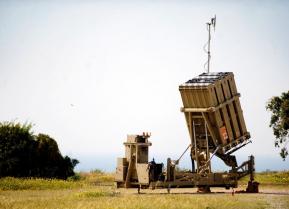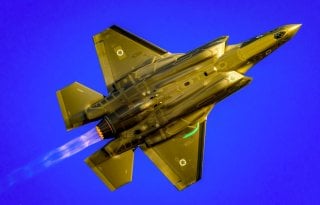Why Didn't Israel See the Hamas War Coming?
With the exception of the Yom Kippur War of 1973, in most other conflicts, Israel had the advantage of surprising the enemy with mass aerial attacks to achieve “strategic paralysis.” However, in this conflict, Hamas not only deprived Israel of this advantage but also turned it against the IDF.
Hamas' assault on Israel on October 7 was a surprise not only in terms of its unexpected nature but also in terms of the unprecedented events that accompanied the assault: Israel's intelligence community's failure to anticipate the attack, Israel’s military's initial lack of an effective rapid response, and the unexpected success of militias in the early hours. Although it is still too early to identify the causes of these circumstances, there are educated guesses we can make.
Israel Did Not See the War Coming
For starters, in recent years, Israel’s intelligence community has been largely focused on Iran and its borders with Syria and Lebanon. Essentially, Israelis have been using their espionage capability primarily to counter the development of Iran’s nuclear and ballistic programs, and secondarily to prevent the transfer of advanced military equipment from Iran to Hezbollah in Lebanon via Syria. Tel Aviv’s recent state of high alert regarding Iran and Hezbollah's joint construction of an airport in Southern Lebanon, activities of the Iran-backed Hussein Brigade in Syria, and Hezbollah’s recent installment of tents in the City of Ghajar are indicators of the intelligence community's diverted attention. In this context, one might argue that Hamas and its backers, mainly Iran and Hezbollah, were counting on this diversion and have been attempting to exacerbate it. As of now, neither Israeli nor any other sources know what exactly was inside Hezbollah’s tents, leading some to speculate if it was a “false red flag” operation.
Beyond what caused Israel’s intelligence lapse, we need to understand its impact. Just three weeks ago, on September 12th, the so-called Gaza Strip’s Joint Operations Room, comprising various Palestinian militias led by the military wing of Hamas, al-Qassam Brigades, conducted a military drill. They practiced mass rocket attacks, utilized offensive drone capabilities, and refined their urban guerrilla warfare techniques. All these tactics have been employed in the current assault, yet Israel’s intelligence community failed to anticipate the attack.
In addition to the diversion of intelligence attention, it seems Israel, in the recent assault, has been deprived of one of its primary advantages: the element of surprise.
Strategic Paralysis
With the exception of the Yom Kippur War of 1973, in most other conflicts, Israel had the advantage of surprising the enemy with mass aerial attacks to achieve “strategic paralysis.” However, in this conflict, Hamas not only deprived Israel of this advantage but also turned it against the IDF. To compound the “tactical paralysis” Israel faced, the Palestinians employed a Blitzkrieg-like strategy, focusing their forces on specific entry points, then rapidly advancing, followed by periodic outbreaks behind Israel’s defense lines. Additionally, Hamas seems to have attempted to create chaos among the public and distract the Israeli military by launching attacks from the sea using boats and motor-powered hang gliders.
Hamas’s tactical innovations also included the use of new weaponry and the projection of unprecedented firepower. Reflecting on their 2021 conflict with Israel, Hamas realized that while they couldn't out-tech the Iron Dome, they might outpace its reloading capabilities. By concentrating their fire, launching numerous rockets, shells, and kamikaze drones towards Israeli territory, they hoped to overload the Iron Dome’s capacities. Their success in this seems relative. Drawing inspiration from the Russia-Ukraine conflict, Hamas employed hardly detectable quadcopter drones to target Israeli troops and observation posts.
In this conflict, Hamas appears to be trying to neutralize one of Israel’s major advantages: aerial superiority, by taking 100 Israelis hostage. While the primary objective of taking hostages is likely to use them as bargaining chips in future negotiations - as Hamas leadership already stated that they have enough hostages to free all Palestinian prisoners - it's worth noting that Hamas is likely housing these hostages in bunkers and tunnels. This tactic not only restricts the Israel Air Force's freedom of movement but also increases the potential for collateral damage. In past conflicts, militias stockpiled their ammunition and troops in civilian areas to create a human shield. By adding Israeli citizens to the mix, they've now created a double-edged sword: if Israel attacks, it risks its citizens; if it doesn't, it still faces challenges.
In the end, despite these tactics, the asymmetrical military capability between Israel and Hamas remains evident. The IDF has absolute superiority in every domain, prompting the question: why was the assault even launched? As we move forward, we may get closer to answering this. For now, it seems Hamas hopes that by leveraging the hostages, they can press Israel to ease restrictions on the Gaza Strip or release prisoners. Or perhaps, all of Hamas' actions are part of a grander strategy, luring the IDF into a land invasion of the Gaza Strip and drawing them into a war of attrition. Only time will tell.
Arman Mahmoudian is a lecturer of Russian Studies and International Affairs and a researcher at the University of South Florida’s Global and National Security Institute. Follow him @MahmoudianArman.
Image: Creative Commons.


